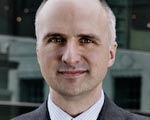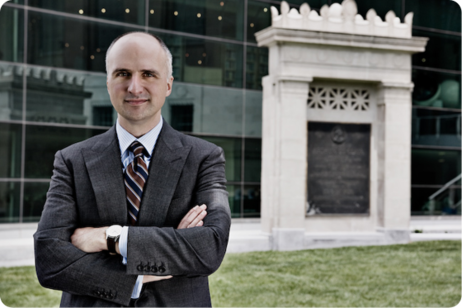One Billion Rides
Published Dec-08-09Breakthrough:
A suite of proposals to get people out of their cars and onto public transport in Chicago. Could open innovation be a new way for regional governments to implement change?
Company:
Aaron M. Renn, United States
The Story:
 Chicago is notorious for its traffic problems with bottlenecks and gridlock daily occurrences experienced by many drivers. To get the city moving the Chicagoland Chamber of Commerce posted an open innovation challenge to get people out of their cars and using mass transit.
Chicago is notorious for its traffic problems with bottlenecks and gridlock daily occurrences experienced by many drivers. To get the city moving the Chicagoland Chamber of Commerce posted an open innovation challenge to get people out of their cars and using mass transit. The twin fold aims of this particular challenge were to find ideas of how to increase mass transit use to 1 billion rides per year whilst simultaneously reducing the greenhouse gas emissions from cars. To reach that figure the Chamber estimated that 800,000 individuals would have to be persuaded to leave their cars at home to ride on public transportation.
Flow of Ideas
More than 125 proposals were sent in from all over the world to InnoCentive, including some from Australia, Kenya, and Japan. The solution seekers were pleasantly surprised by the quality of many of the ideas about how to reduce car use and boost public transport.
The winning submission came from Aaron M. Renn who picked up $5,000 for his work. He is based in Chicago and works in the technology field as well as running a blog called the Urbanophile. He heard about the challenge from one of his readers, and believing that he has a lot to contribute started to jot down some ideas. He sent in an innovative and comprehensive list of proposals that outlined exactly how the Chicago Transit Authority (CTA) could add capacity; specifically by making better use of off-peak times and raising the bar in terms of the quality of the user’s experience.
Proposals to get the City Moving
Among his list of proposals and plans were the introduction of longer trains and more buses during the busiest hours, as well as free transfers for people who have to cross lines. He suggested discarding plans to build new lines in the far outer suburbs as the needs of the vast majority of travelers (who live in urban areas) are not being met. He also outlined ideas for more dynamic pricing systems to attract new users, and to make late night services free.
On the face of it some of the ideas do not sound earth-shattering, but what appealed to the Chamber was Renn’s multi-pronged approach, and the fact that he was taking some familiar concepts further, with faster implementation times.
Open Innovation Boosts Dialogue
Although the open innovation challenge has been won and the ideas applauded, implementation will not happen overnight. The Chamber of Commerce understands well that a bigger shift needs to take place in individual behavior, and that it won't be easy to tackle a mighty bureaucratic machinery. However, its members feel that by travelling down the open innovation highway they have started an important dialogue that will unclog the city’s main travel arteries, get people where they want to be when they want to be there, and slash the amount of pollution that’s billowing up into the atmosphere.
Next Story »

